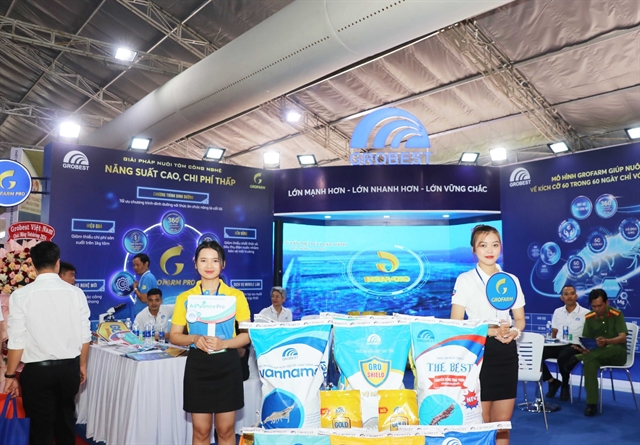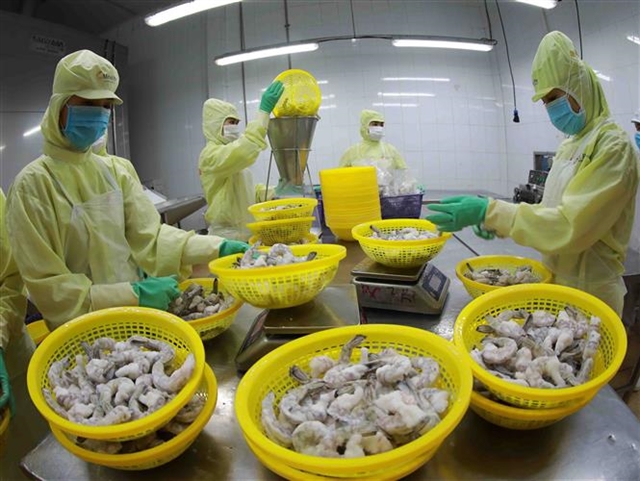 Economy
Economy

 |
| Workers process shrimps at a plant for export in Hậu Giang Province. — VNA/VNS Photo |
HÀ NỘI — India, Ecuador and Việt Nam, three out of the four largest shrimp suppliers to the United States, will face preliminary countervailing duties (CVD) ranging from under 2 per cent to a maximum of 196 per cent as early as this weekend, according to the US Department of Commerce (DOC).
The DOC has summoned exporters and applicants for potential tariffs due to suspected subsidy programmes that allow them to offer low-priced shrimp in the US market.
As a result, India is now subject to an overall countervailing duty rate of 4.36 per cent. Devi Sea Foods faces a slightly higher rate of 4.72 per cent, while Sandhya Aqua Exports, Neeli Sea Foods, Vijay Aqua Processors, and Neeli Aqua Farms face a rate of 3.89 per cent.
Ecuador faces a countervailing duty of 7.55 per cent on all shrimp exports to the US. Sociedad Nacional de Galapagos has a rate of 1.69 per cent, while Industrial Pesquera Santa Priscila faces a duty of 13.41 per cent.
Việt Nam has the lowest duty rate of 2.84 per cent, including Soc Trang Seafood Joint Stock Company. However, Thong Thuan Company faces a countervailing duty of 196.4 per cent, which is based on adverse facts available, according to the DOC.
The tariff rates will become effective once the DOC announces them officially in the Federal Register, which is anticipated to occur in the next few days.
Once the preliminary determinations are published to the Federal Register, importers will be required to place cash deposits equal to the rates determined by the DOC for up to four months with US Customs and Border Protection.
If the investigating authorities conclude that these countries are not in violation of providing unlawful subsidies or if the subsidised imports do not harm the US shrimp industry, the tariffs will be refunded.
However, a final decision is expected in late 2024, leaving importers potentially facing costs for the majority of the year.
Meanwhile, Indonesia, the third-largest shrimp supplier to the US, was found to have subsidy rates below the amount requiring countervailing duties, the DOC said.
Last year, India, Ecuador, Indonesia and Việt Nam account for 90 per cent of the US total import volume, worth US$5.6 billion. — VNS




